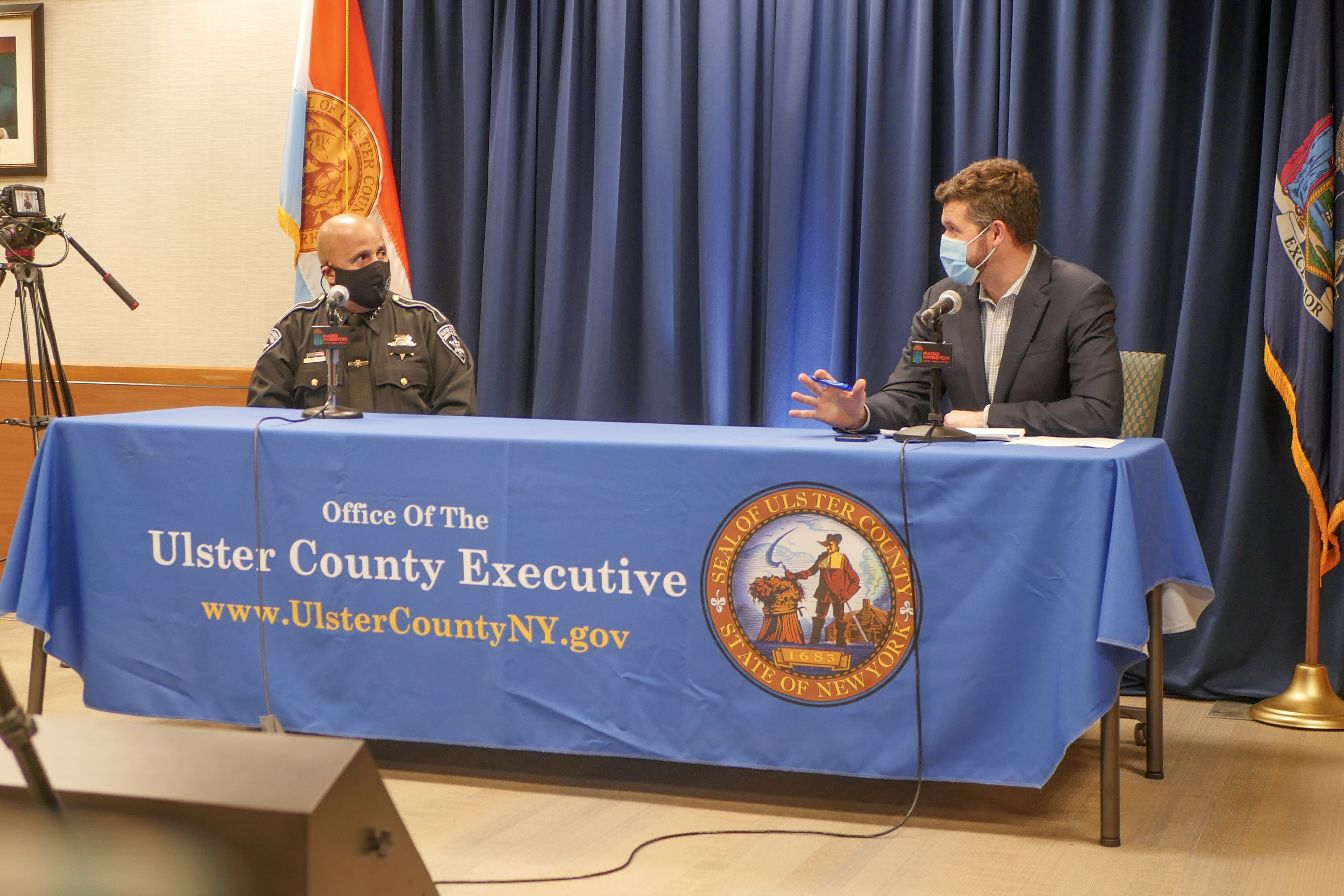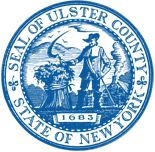
County Executive Ryan has now dedicated $2.7 million dollars in unprecedented funding over the past two years in opioid prevention spending and grant funding
Since 2018, the overdose fatality rate has been cut nearly in half due to County programs that support harm reduction, connections to care strategies, and intervention
Last year, County Executive Ryan declared a Public Health Emergency due to the spike in fentanyl related deaths
KINGSTON, N.Y. - Ulster County Executive Pat Ryan announced that Ulster County has received $1.4 million in new additional grant funding towards opioid use prevention in the last few weeks. The Ulster County Sheriff’s Office, with the help of Ulster County Department of Health’s Healing Communities Division, recently received a Bureau of Justice Assistance (BJA) Grant for $900,000. Additionally, the Ulster County Department of Health Healing Communities Division has received nearly $500,000 in National Association of County and City Health Officials (NACCHO) grant funding. As part of one of County Executive Ryan’s “Big Five” priorities to Tackle the Opioid Epidemic, Ryan has now dedicated $2.7 million dollars in unprecedented funding over the past two years in opioid prevention spending and grant funding.
In 2020, largely as a result of the COVID-19 pandemic, opioid-related fatalities increased 94% in Ulster County, resulting in a total of 64 deaths. This surge in opioid-related fatalities mirrors a nationwide trend. This week the Center for Disease Control and Prevention announced that opioid-related fatalities reached its highest number ever recorded in over a 12-month span. However, due to the County’s extensive harm reduction efforts and interventions, the overdose fatality rate dropped sharply from 20% in 2018 to 13.5% in 2020.
“Now more than ever, in the wake of the compounding challenges COVID-19 has caused, it is critical that we do all that we can to ramp up and prioritize combating the opioid epidemic,” said County Executive Ryan. “These funds will go a long way in helping to educate the public, provide needed treatment and support, and to ultimately save lives. Ulster County will not just talk about the issue, we are taking real action and putting funding behind stopping an epidemic that has ripped apart too many families in our community.”
“For the first time in Ulster County, law enforcement will have civilian partners embedded to confront this epidemic. Families want action from their government and law enforcement to combat this epidemic that is continuing to rip apart our communities,” said Ulster County Sheriff Juan Figueroa. “Together with County Executive Ryan, we are setting up an alert system with a user-friendly app to better communicate the risk to people in addition to the work we are doing in the Sheriff’s Office to assist those who have overdosed and help them get treatment, and to tailor a program with the impacted families. Tackling the opioid epidemic is one of my priorities as Sheriff, and I am thankful to have so many partners in Ulster County Government and local law enforcement to combat this crisis.”
“We, at Columbia University, are extremely proud that our NIDA/SAMHSA funded HEALing Communities Study team in Ulster County could identify and apply for these additional grants,” said Associate Director of the Center for Healing from Opioid and Other Substance Use Disorders Dr. Timothy Hunt. “Sustainable funding streams is the goal of the Communities That HEAL intervention to continue the work of implementing best practices known to prevent overdose deaths. With this additional funding the Overdose Strategic Action Team and partners can both surge programming immediately to address the urgent need caused by the pandemic, as well as support the expansion of the High Risk Mitigation Team for the next 3 years.”
The $900,000 BJA grant awarded to Ulster County will keep residents from falling through the existing treatment gaps by extending the County’s High-Risk Mitigation Team into the City of Kingston – where close to 40% of the county’s overdoses occur. The City of Kingston High Risk Mitigation Team (HRMT) will be made up of two peers and a case manager (social work credentials), embedded within the Ulster County Sheriff's ORACLE team, to respond to overdose and individuals struggling with opioid use disorder.
The $497,35 NACCHO grant funding will allow Samadhi Recovery Center in Kingston to become a 24/7 center. Currently they are open Monday through Saturday, 11am to 9pm. This funding will allow for a fully staffed 24/7 Harm Reduction Recovery Center and linkage to a quick response MOUD (medication for opioid use disorder) tele-medication program. It will also fund Community Services of the Hudson Valley to continue a harm reduction program that otherwise would have closed due to a lack of State funding. Additionally, it will create a student-driven, peer-to-peer prevention messaging campaign, with creative elements for use in all media to substantially reduce the demand for opioids and other harmful substances over time.
Between 2015 and 2018, there was a 93% increase in opioid fatalities-the second highest rate of any county in New York State outside of New York City. In 2019, thanks to the collective work of the County fatalities decreased by 41.1%. Last year’s opioid fatality increase is largely due to the ripple effects caused by the COVID-19 pandemic. This week the Center for Disease Control and Prevention announced that opioid-related fatalities reached its highest number ever recorded in over a 12-month span.
###

